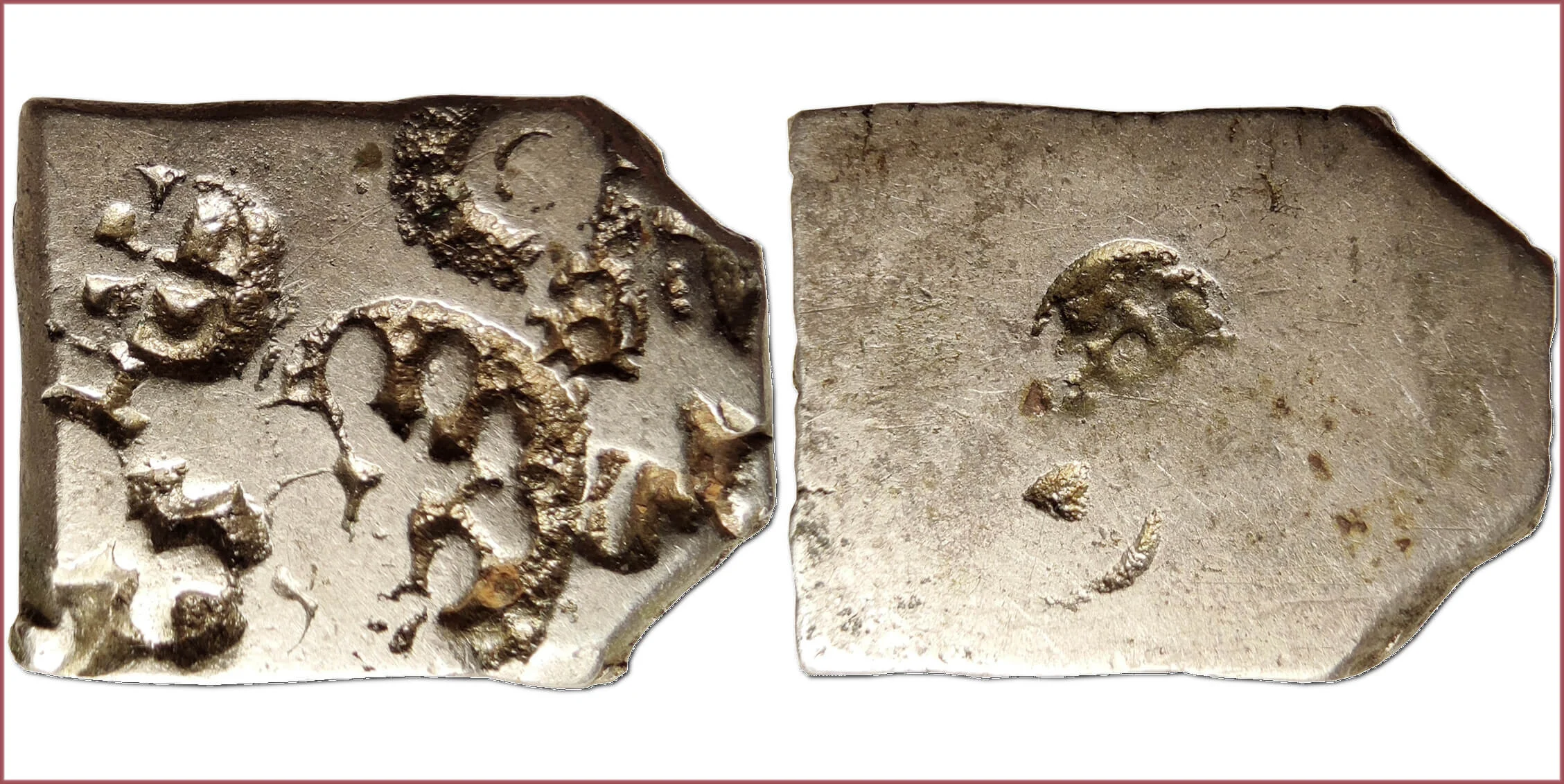KARSHAPANA: COIN OF ANCIENT INDIA
Karshapana, 322-184 BC: Maurya Empire (Ancient India)
It is very difficult to identify these protocoins with any accuracy due to their often poor condition and a large number of varieties (we are talking about both the approximate dates of issue and the issuer itself). — This demonstrated ancient coin is no exception: it may turn out that it actually belongs to an even earlier period of Indian history: to the so-called "Pre-Mauryan period" (for example, the Magadha Kingdom).
5 symbols on the obverse (sun, animal...) and 1 on the reverse.
The shape of the coin is a rectangle.
- Silver: 16 mm - 3.3 g
- Reference price: 13$
COIN KARSHAPANA — WHERE & WHEN (coins catalog: by names & emitents)
- ANCIENT INDIA (6th century BC — 3th century AD) — Pre-Mauryan India + Maurya Empire + Satavahana Empire...: karshapana
KARSHAPANA as coin name denotes an ancient Indian coin. However, not everything is so simple with this coin name...
The fact is that the term karshapana in numismatics refers to extremely diverse coins. At the mention of this name, most numismatists will recall some of the oldest coins in the history of mankind (starting from the 6th century BC) — the rectangular silver primitively designed karshapanas of the Pre-Mauryan period in the history of India and similar protocoins of the times of the Mauryan Empire. But also karshapana are copper, silver and even lead coins of the round shape familiar to us from later times — up to the 3rd century AD.
The first karshapanas did not appear as national money, but as an initiative of merchants from different regions — in order to activate and simplify trade. In this way, the need to weigh silver every time before paying for goods and services disappeared.
The name of the karshapana coin (Sanskrit "कार्षापान" — kārṣāpaṇa) is probably related to the unit of weight measurement in ancient India — kārsha. In addition, the English term "cash" according to one version comes from "kārsha" (Sanskrit).











